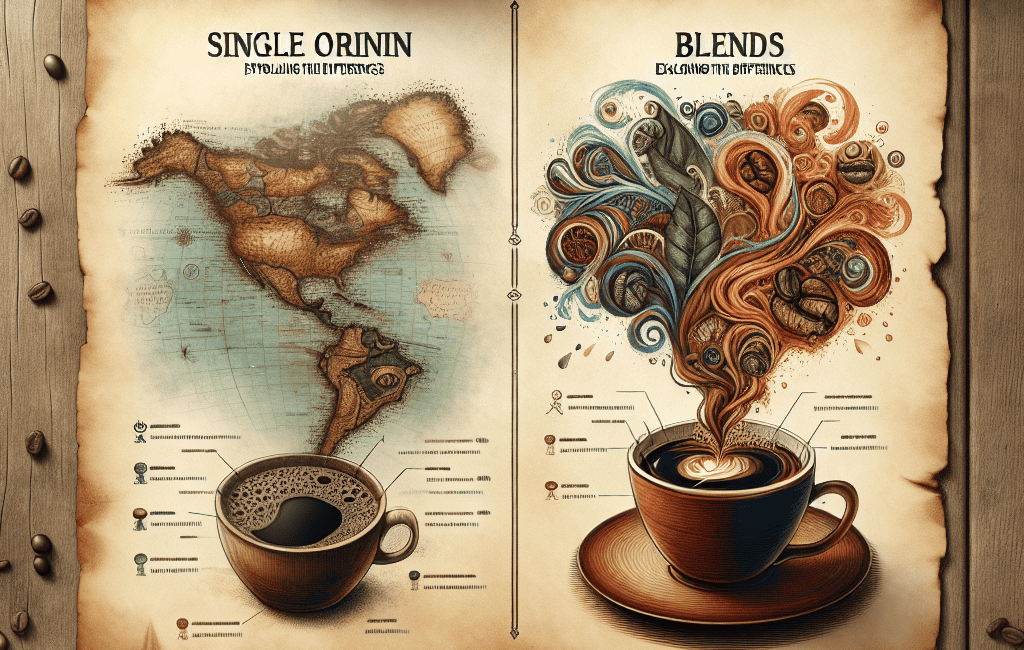
Single Origin vs. Blends: Exploring the Differences
Welcome to the world of coffee! In this post, we delve into the fascinating differences between single origin and blended coffee. Whether you’re a seasoned coffee enthusiast or just beginning your exploration of this beloved beverage, understanding these concepts can enhance your coffee-drinking experience.
What is Single Origin Coffee?
Single origin coffee refers to coffee sourced from a specific region, country, or even a single farm. This type of coffee is celebrated for its unique flavor profile, which is influenced by various factors such as the altitude, climate, soil, and the specific coffee varietal grown in that area.
Characteristics of Single Origin Coffee
- Distinctive Flavor Profiles: Each single origin coffee has its own unique taste that reflects the region it comes from. For example, Ethiopian coffees are often fruity and floral, while Colombian coffees are known for their smoothness and nutty flavors.
- Traceability: Because single origin coffee comes from a specific location, consumers can trace its journey from farm to cup. This transparency can enhance the appreciation for the coffee’s story.
- Seasonality: Single origin coffees are often seasonal, meaning they may only be available at certain times of the year, depending on the harvest.
What are Blends?
Blended coffee is a mixture of beans from different origins, regions, or even different processing methods. The goal of blending is to create a balanced flavor profile that enhances the best qualities of the individual beans.
Characteristics of Blended Coffee
- Consistency: Blends often provide a more consistent flavor profile, making them popular among coffee shops and consumers who prefer reliability in taste.
- Complexity: By combining beans from different sources, roasters can craft complex flavor profiles that might not be achievable with single origin beans alone.
- Customizability: Blends can be tailored to highlight specific flavors or to create a desired mouthfeel, allowing roasters creative freedom in their offerings.
Flavor Profiles: A Comparative Analysis
One of the most exciting aspects of coffee is its diverse flavor profiles. Here’s how single origin and blends differ:
Single Origin Flavor Profiles
Single origin coffees often feature vibrant and unique flavors that are tied closely to their geographic location. For instance:
- Ethiopian Yirgacheffe: Known for its bright acidity and floral notes.
- Sumatra Mandheling: Offers a full body with earthy and herbal characteristics.
- Colombian Supremo: Typically smooth with a mild sweetness and nutty undertones.
Blend Flavor Profiles
Blends are typically designed to balance flavors, creating a cup that is harmonious and easy to drink. For example:
- Breakfast Blend: A light-bodied, smooth coffee that is often a blend of Central American and Colombian beans.
- Espresso Blend: A rich and bold combination of beans that may include a mix of Brazilian and Ethiopian coffees for sweetness and acidity.
- Dark Roast Blend: Often features beans roasted to bring out deep, smoky flavors, usually combining beans from various origins.
Brewing Considerations
The choice between single origin and blends can also depend on your brewing method and personal taste preferences. Here are some considerations:
Single Origin Brewing
When brewing single origin coffee, consider the following:
- Brewing Method: Pour-over or French press methods often highlight the unique characteristics of single origin coffees.
- Grind Size: Experimenting with grind size can help you extract the best flavors from the beans.
- Water Temperature: Different single origins may require varying water temperatures to optimize flavor extraction.
Blended Coffee Brewing
For blended coffees, keep these tips in mind:
- Consistency: Blends are often designed for espresso machines, so if you prefer espresso, look for blends crafted for that purpose.
- Brewing Time: Adjusting brewing time can help you achieve the desired flavor balance in your cup.
- Pairing: Blends can often pair well with milk or cream, enhancing their creamy texture and flavor.
Which One Should You Choose?
Your choice between single origin and blends ultimately depends on your taste preferences and experience. Consider the following:
- If you’re looking for a unique tasting experience that tells a story, single origin coffee is the way to go.
- If you prefer a consistent and balanced flavor profile, a well-crafted blend may be more suitable for you.
- Don’t hesitate to explore both! Trying different single origins and blends can enhance your appreciation for the complexities of coffee.


